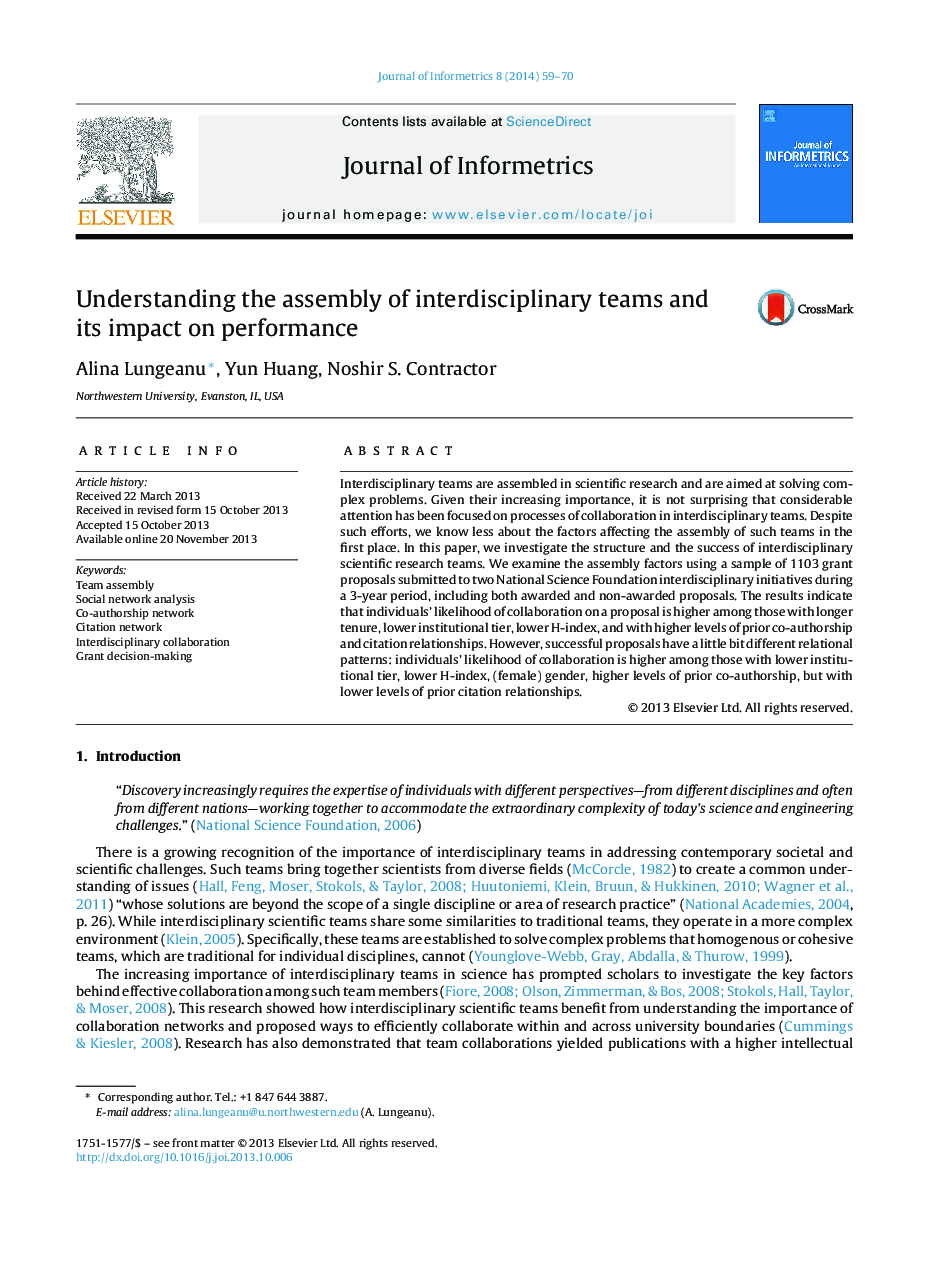| Article ID | Journal | Published Year | Pages | File Type |
|---|---|---|---|---|
| 523961 | Journal of Informetrics | 2014 | 12 Pages |
•We investigate the assembly and success of interdisciplinary scientific teams.•People with lower H-index or from lower-tier institutions team up more.•Higher tenure and prior co-authorship/citation increase likelihood of collaboration.•More co-authorship but less mutual citations among members leads to team success.•Having females in teams increases the chance to get NSF grants.
Interdisciplinary teams are assembled in scientific research and are aimed at solving complex problems. Given their increasing importance, it is not surprising that considerable attention has been focused on processes of collaboration in interdisciplinary teams. Despite such efforts, we know less about the factors affecting the assembly of such teams in the first place. In this paper, we investigate the structure and the success of interdisciplinary scientific research teams. We examine the assembly factors using a sample of 1103 grant proposals submitted to two National Science Foundation interdisciplinary initiatives during a 3-year period, including both awarded and non-awarded proposals. The results indicate that individuals’ likelihood of collaboration on a proposal is higher among those with longer tenure, lower institutional tier, lower H-index, and with higher levels of prior co-authorship and citation relationships. However, successful proposals have a little bit different relational patterns: individuals’ likelihood of collaboration is higher among those with lower institutional tier, lower H-index, (female) gender, higher levels of prior co-authorship, but with lower levels of prior citation relationships.
